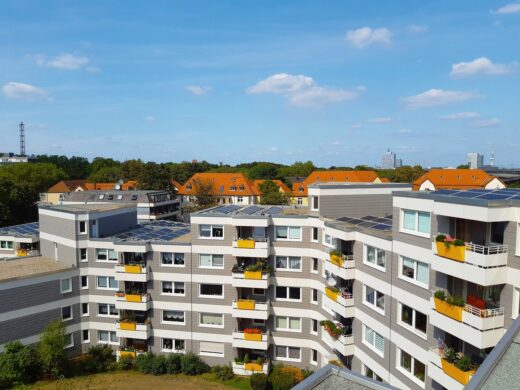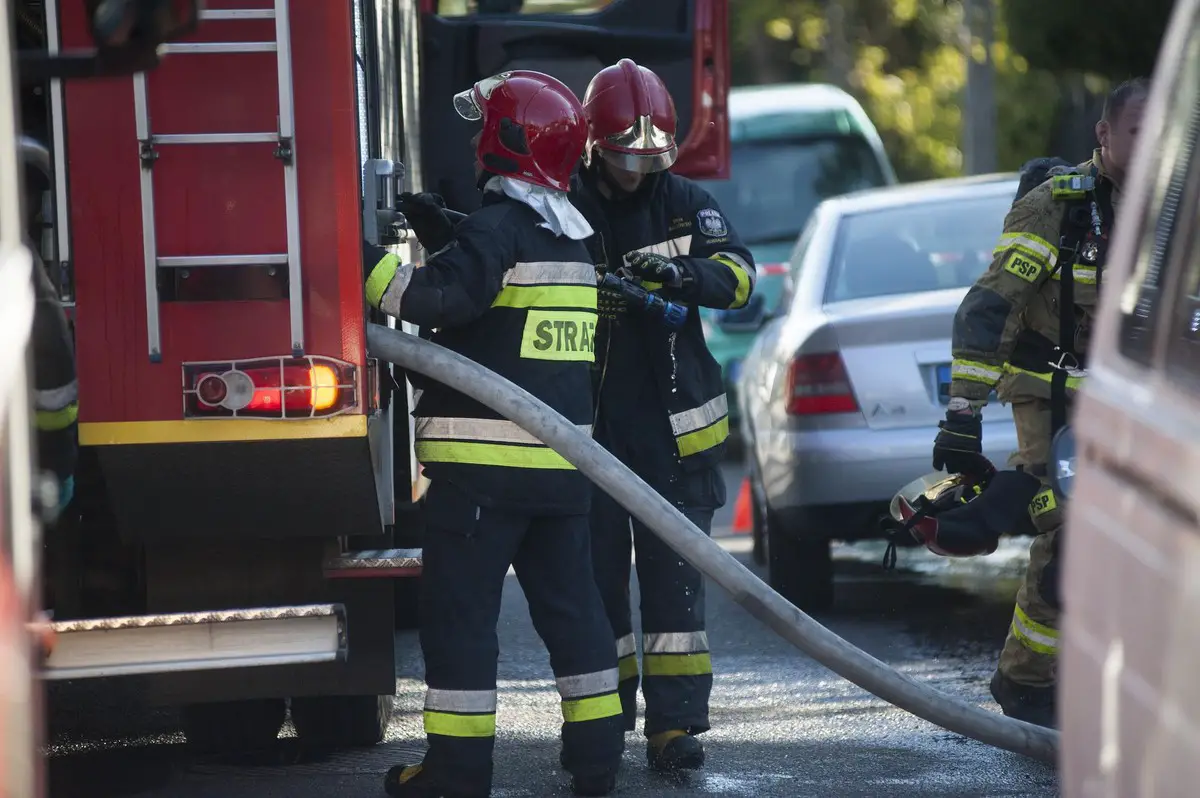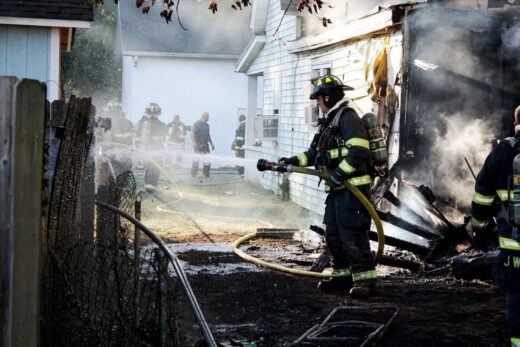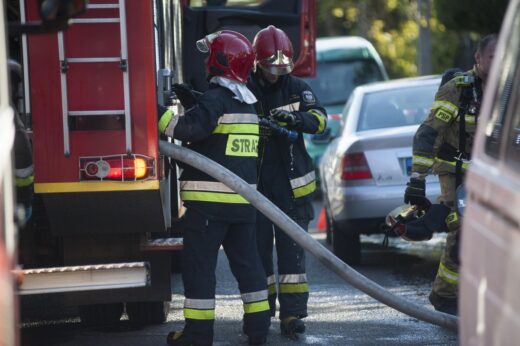How to make your house fire safe advice, Home fire-resistant materials guide, Property smoke alarms, Doors
How to Make Your House Fire Safe
3 June 2022
The necessity for home safety is equivalent to the need to practice overall safety. Keeping your house clear of hazards and outfitted with home safety items may help you avoid routine mishaps like falls and protect you from emergencies like fires.
Every year, thousands of people are killed in incidents caused by fire. With fires recorded nearly every other day, you are undoubtedly wondering how you might improve residential security to safeguard your house from fire. Fortunately, the good news for homeowners is that there are many ways and easy precautions through which you can fireproof your home, belongings, and family.
Accidents involving fire can happen at any time. Keeping your near and dear ones safe should so be your first concern. But the most important question here is how can one keep their home safe from fires? If you have been thinking just the same, do not worry because we have got these points covered for you. The following are some excellent domestic security options for fireproofing your property.
How to Make Your House Fire Safe Options
- Use fire-resistant materials for your home
Every year, a huge number of people are killed in house fires that may have been averted with minor adjustments in construction materials and wise replacements. By using fire retardant materials, the fire can be resisted for a longer duration until reinforcements arrive to put out the fire. We have listed some of the best fire-resistant materials safe for residential usage that you can use in your building.
One effective measure to enhance residential security against fire risks is to engage the services of a reputable fire watch security company in Chicago. These professionals specialize in implementing proactive measures and providing round-the-clock monitoring to prevent and respond to fire emergencies, ensuring the safety of your home and loved ones.
- Brick: Bricks are an essential component of every home, and they are also fire resistant. Bricks have high heat and temperature tolerance. A single brick can endure more heat and temperature than a wall because it consists of sand and cement. But, based on how thick a wall is, a wall still offers effective fire protection. A brick wall can withstand flames lasting one to four hours.
- Glass: Since window frames these days have timber frames, they are also highly prone to fire threats. Replacing regular glass windows with fire-resistant glass can significantly reduce the threat of fire. A conventional window glass might simply crack during a fire, allowing flames to quickly infiltrate inside the house. Dual paneled glasses with a high absorption rate are used in fire-resistant glasses, making them four times more robust than regular glass windows. Apart from replacing the normal glass with fireproof glass, one should also replace wooden frames with PVC or steel frames.
- Concrete: Construction is impossible without the use of concrete. Concrete is a fireproof material due to limited heat conduction. Concrete strengthens and protects steel constructions against fire due to its inherent fire resistance qualities. Concrete is used as a roofing material due to its fireproof qualities.
- Plaster: Plaster is a widely used building material recognized for its high heat and fire resistance qualities. Plaster is a mixture of cement, sand, and limestone used to cover buildings’ walls for aesthetics and give a fire-resistant coating to the structure.
- Gypsum: Another typical fire-resistant substance used in buildings is gypsum. Walls these days have gypsum sheeting as coatings to avoid fire dangers and obtain strong fire resistance.
- In the unfortunate event of a fire, it’s essential to act swiftly and efficiently to ensure everyone’s safety. The first priority should always be to evacuate the building immediately, following a pre-planned escape route if possible. Once safely outside, call emergency services to report the fire. Avoid re-entering the building for any reason until the fire is completely extinguished and authorities deem it safe. In case of exposure to fire extinguishing agents, such as foam, it’s important to be aware of potential health risks. For instance, if you experience AFFF exposure symptoms, such as respiratory issues or skin irritation, seek medical attention immediately, as some firefighting foams can contain harmful chemicals. Having a fire safety plan and practicing it regularly can make all the difference in a life-threatening situation.
- Reduce the vegetation around your home
Beautiful vegetation in your house may be quite the sight. It does, however, make your home more vulnerable to flames. Check for dry plants and trees surrounding your home since it poses the greatest risk. Dry, combustible shrubs should be pruned.
You may even employ a professional to assist you with the task. Trim plants close to each other in addition to eliminating dry vegetation. Pine cones and dry leaves are extremely flammable. They should not be used as compost or manure. The same goes for tree bark.
- Get fire doors in your house
A fire in the house may quickly spread, consuming entire rooms in less than five to ten minutes. However, the damage caused by smoke and fire can be avoided by installing fire doors in significant areas in your home and keeping them closed at night, as fires are most likely to occur during the night.
A fire door can keep smoke, heat, and flames out of the building for up to an hour, safeguarding the escape path and allowing you to get out safely.
- Get smoke alarms for your house
Smoke alarms have revolutionized home security today. Smoke alarms can easily detect smoke, giving early warnings in the event of a house fire. In case any smoke or fire is detected, traditional alarms beep, whereas smart detectors send notifications to your smartphone. For optimal safety, a smoke detector should be installed in every room of your home, excluding the restrooms.
Homeowners living in the capital of Northern Ireland are looking for the most reliable fire alarms Belfast so they can ensure their homes are safe and secure. With the right alarm system, families can have peace of mind knowing they are protected from potential fire hazards.
There are different types of smoke alarms in the market that are appropriate for different sections of the house. Smoke alarms should be placed away from chimneys and air ducts, and batteries should be changed every six months. You need to get your smoke alarm tested yearly to check whether it is working properly or not.
- Get a fire extinguisher for your home
The presence of a fire extinguisher from a gas cylinder manufacturer can make a world difference between a little cooking mishap and the home truly burning down. Fire extinguishers are categorized according to the sort of fire they are meant to extinguish. Make sure you understand the distinctions and how to use them in an emergency circumstance. We have provided the ABC classification to give a clearer idea:
Class A: This category of extinguisher is used to put out a fire caused by combustibles like wood, fabric, rubber, domestic garbage, and the majority of plastics.
Class B: Used to put out a fire caused by flammable liquids, oil, gasoline, paints, etc.
Class C: Used to put out a fire caused by flammable gases like methane, hydrogen, acetylene, propane, and natural gas are examples of Class C gases.
Class D: This category is used to put out a fire caused by combustible metals, including magnesium and aluminum.
Class E: This class extinguisher is used to put out a fire caused by electricity.
How to Make Your House Fire Safe Conclusion
Fires can cause extensive property damage as well as fatalities. However, you can avoid fires by simply implementing simple security measures such as using fire-resistant materials and removing dry vegetation surrounding your home. You can also consider getting a small fireproof safe for your important documents and invaluable objects.
Underestimating fire can be a big mistake. Minor errors cause some fires. Keep lighters and other inflammable objects away from kids, and turn off the electricity and gas. Even better to get a house insurance policy to protect against damages from fires.
Comments on this guide to How to make your house fire safe article are welcome.
Property Fire Safety
Fire Safety Posts
Fire Damage Restoration and Remediation
Safety Precautions Against Home Fire
Fire-Safe Aluminium Rainscreen Cladding
How to avoid wrong choices in real estate investing

Qualities first-time landlords should look for in tenants

Building Articles
Contemporary Property Articles – architectural selection below:
Comments / photos for the How to make your house fire safe advice page welcome







